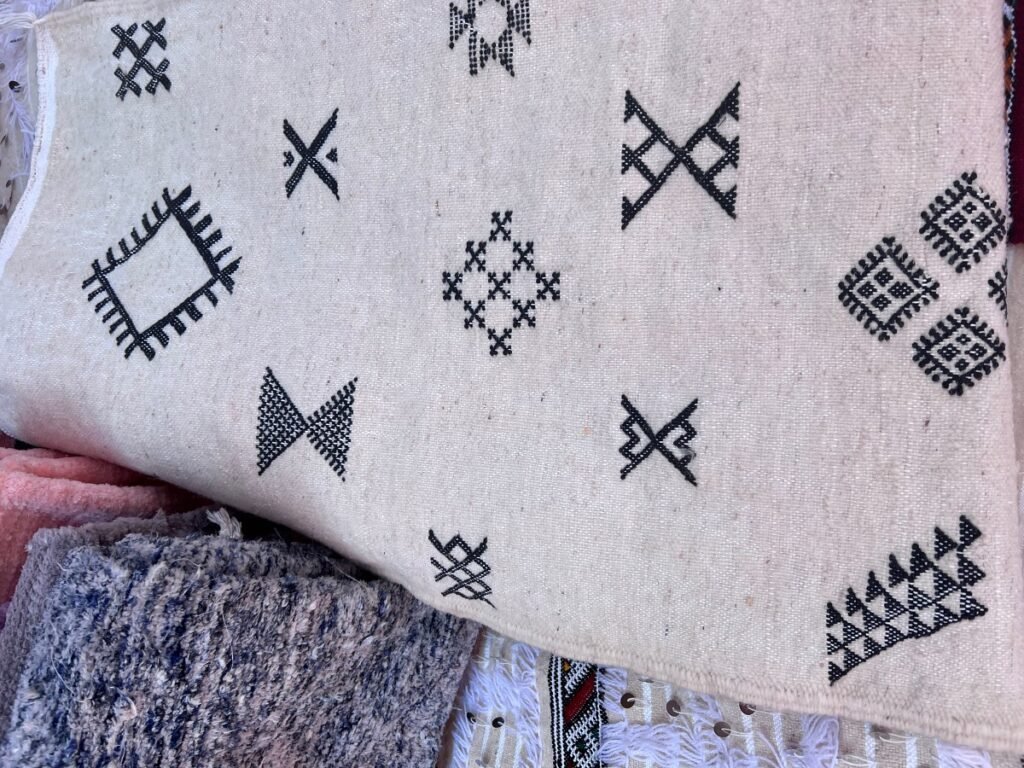Culture & Traditions, Handmade Product Spotlights
Why Berber Symbols Still Matter Today
Berber symbols are more than decorative motifs. They are ancient expressions of identity, spirituality, and storytelling. Rooted in the indigenous Amazigh culture of North Africa, these symbols have been etched into Moroccan textiles, pottery, jewelry, and architecture for centuries. Even in a rapidly modernizing world, their meanings continue to resonate and inspire.
Each symbol carries a message. The diamond shape, often found in rugs and embroidery, represents femininity and fertility. Zigzags mimic the flow of water, symbolizing life and continuity. The “X” is a protective sign, believed to ward off negative energy. These visual codes were never random. For Berber communities, they were a language one that did not rely on written words but was instead passed through generations of weavers, potters, and metalworkers.
Today, as Moroccan handicrafts find their way into global markets and modern interiors, these symbols remain intact. They are not used simply for aesthetic appeal. They are a connection to ancestry, a tribute to resilience, and a quiet form of resistance against cultural erasure.
Artisans, especially women in rural cooperatives, continue to use these symbols with intention. They are embedded into rugs, carved into wooden furniture, and painted onto ceramics not as design trends but as living history. Even younger generations are reclaiming these motifs, merging them with contemporary forms in art, fashion, and architecture.
Incorporating Berber symbols into your home or wardrobe is more than a design choice. It is an act of cultural appreciation and preservation. These symbols still matter because they carry the voices of a people who have remained deeply connected to land, community, and tradition. They remind us that beauty can hold meaning, and that heritage lives on when we choose to honor it.


